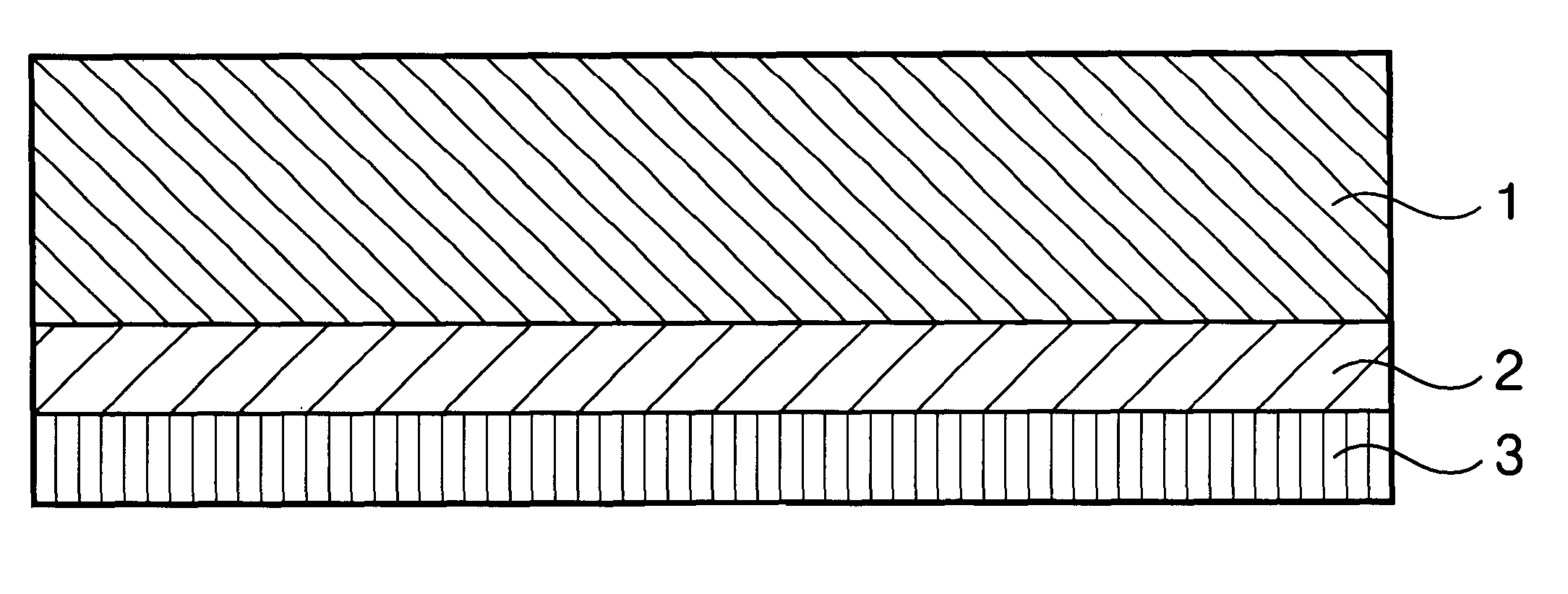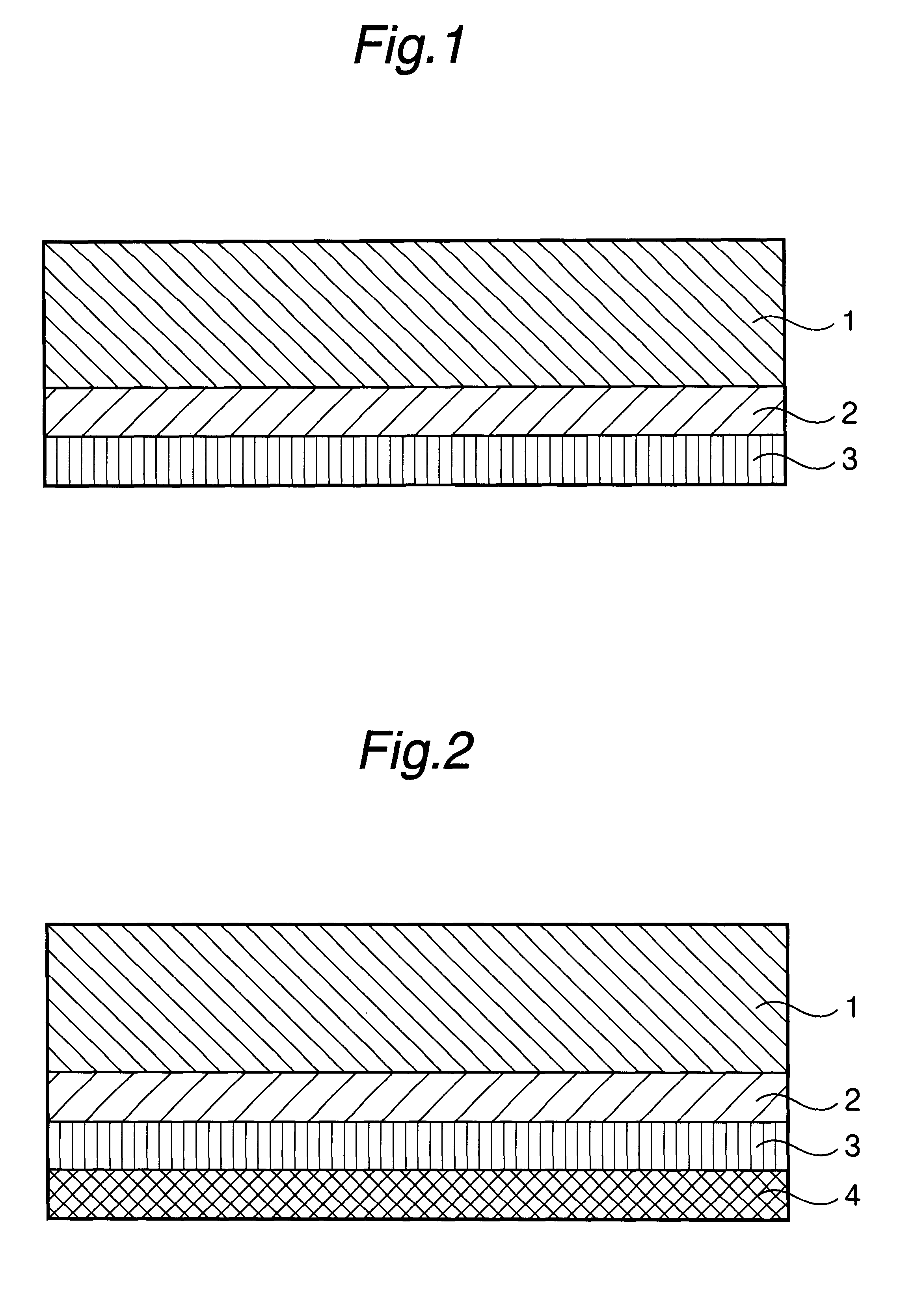Copper foil for printed wiring board having excellent chemical resistance and heat resistance
a technology of copper foil and printed wiring, which is applied in the direction of metal adhesion improvement of insulating substrates, instruments, heat measurement, etc., can solve the problems of poor chemical resistance and heat resistance of printed circuit boards, and insufficient bond strength between copper foils and substrates. , to achieve excellent bond strength, excellent bond strength, and sufficient bond strength of copper foils with substrates
- Summary
- Abstract
- Description
- Claims
- Application Information
AI Technical Summary
Benefits of technology
Problems solved by technology
Method used
Image
Examples
example 1
A copper foil of 270 g / m.sup.2 (nominal thickness: 35 .mu.m) without passivation was electroplated with copper at a current density of 30 A / dm.sup.2 for 4 seconds using a copper plating bath containing 12 g / liter of copper and 180 g / liter of sulfuric acid with a bath temperature of 30.degree. C. Then, the copper foil was further electroplated with copper at a current density of 32 A / dm.sup.2 using a plating bath containing 70 g / liter of copper and 180 g / liter of sulfuric acid with a bath temperature of 48.degree. C., to subject it to a bond enhancing treatment. Then, the following treatments were carried out.
The copper foil was plated with a zinc-nickel alloy in the following conditions.
zinc pyrophosphate: 20 g / liter
nickel sulfate: 10 g / liter
potassium pyrophosphate: 100 g / liter
pH: 10
bath temperature: 30.degree. C.
current density: 0.2 A / dm.sup.2
plating time: 10 seconds
In the zinc-nickel plated layer thus formed, the amount of zinc was 8 mg / m.sup.2 and the amount...
example 2
The procedure of Example 1 was repeated except that the amount of plated zinc was increased as shown in Table 1, and after the formation of the silane coupling agent layer, a heating was carried out at a surface temperature of 200.degree. C.
Thus, a copper foil for a printed wiring board having a weight of 285 g / m.sup.2 was obtained.
A copper-clad laminate was prepared by using the copper foil in the same procedure as in Example 1. Then, using the copper-clad laminate, test specimens were prepared in the same procedure as in Example 1, followed by examination.
The results are set forth in Table 1.
PUM
| Property | Measurement | Unit |
|---|---|---|
| Linear density | aaaaa | aaaaa |
| Linear density | aaaaa | aaaaa |
| Linear density | aaaaa | aaaaa |
Abstract
Description
Claims
Application Information
 Login to View More
Login to View More - R&D
- Intellectual Property
- Life Sciences
- Materials
- Tech Scout
- Unparalleled Data Quality
- Higher Quality Content
- 60% Fewer Hallucinations
Browse by: Latest US Patents, China's latest patents, Technical Efficacy Thesaurus, Application Domain, Technology Topic, Popular Technical Reports.
© 2025 PatSnap. All rights reserved.Legal|Privacy policy|Modern Slavery Act Transparency Statement|Sitemap|About US| Contact US: help@patsnap.com


